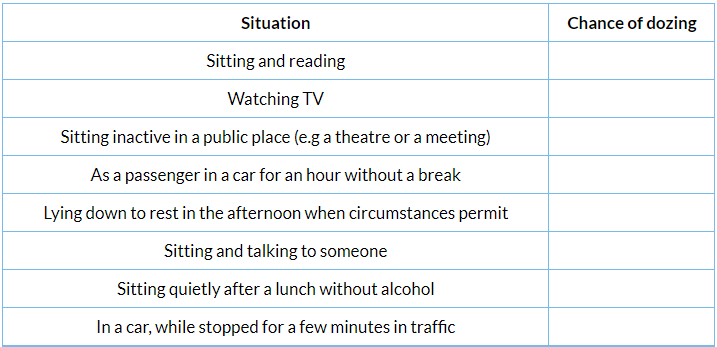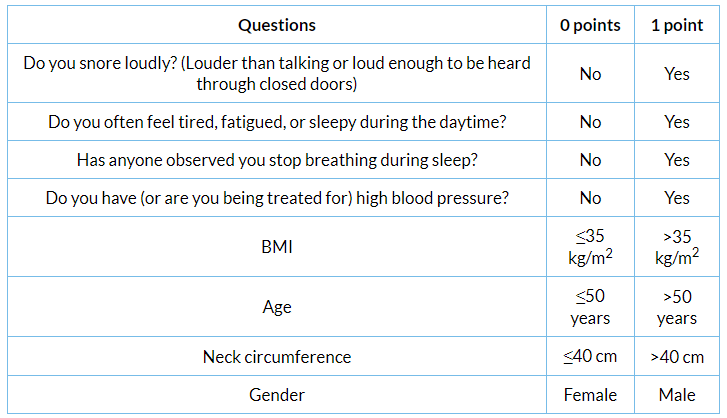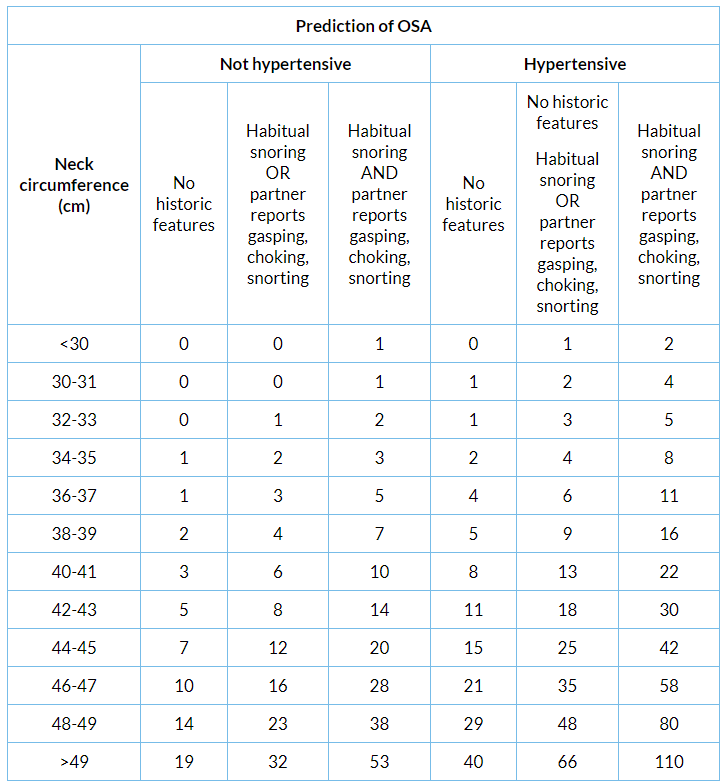3 quick sleep scores- How to use
M3 India Newsdesk Feb 10, 2022
Presented here are 3 quick clinical scores and questionnaires that can aid in assessing and understanding sleep disorders in patients.
Epworth Sleepiness Scale (ESS)
One of the most commonly used questionnaires in clinical practice, the ESS assesses subjective daytime sleepiness among patients. Respondents are asked questions such as, "How likely are you to doze off while sitting and reading?" or "watching TV".


A score of greater than 10 is consistent with excessive daytime sleepiness and a score of greater than 16 is indicative of a high level of daytime sleepiness. The higher the ESS score, the higher that person’s average sleep propensity in daily life (ASP), or their daytime sleepiness. The questionnaire takes not more than 2 or 3 minutes to answer and is usually used to indicate the following conditions:
- Hypersomnia- Excessive daytime sleepiness even after a long night of sleep.
- Sleep apnoea- Cessation of breathing involuntarily for brief periods during sleep.
- Narcolepsy- Neurological disorder that causes sleep attacks in which a person can fall into and wake from REM sleep at any time of day during any activity.
The ESS is not a checklist for identifying those situations in which the respondent most frequently dozes during the day. Nor can it measure a person’s level of alertness/drowsiness continuously. The ESS specifically distinguishes reports of dozing behaviour from feelings of fatigue and drowsiness/sleepiness, in the sense of weariness from exertion. [1]
STOP-BANG questionnaire
The STOP-BANG questionnaire screens for obstructive sleep apnoea (OSA) only, not central sleep apnoea. The STOP-BANG questionnaire is one of the most widely accepted screening tools for OSA. It is usually used for patients undergoing preoperative evaluation. And in patients presenting to a clinical setting with symptoms associated with OSA like daytime drowsiness, snoring, observed periods of nighttime apnoea, noisy breathing, etc.


The STOP-BANG questionnaire is unnecessary if a patient has already been diagnosed with OSA or uses CPAP at night. One of the areas where the questionnaire has poor validation is in the obstetrical population. A subgroup where there is a increased risk of OSA with altered test interpretation. [2]
Sleep apnoea clinical score
Sleep apnoea clinical score is used to predict the apnoea-hypopnea index using the linear model of neck circumference, hypertension, and historical features of habitual snoring and partner's observation of nocturnal choking or gasping.

Methodology: Begin on the line of the patient's neck circumference and then choose the appropriate value based upon the presence or absence of hypertension and whether the patient has none, one, or both above historical features.
Probability of sleep apnoea
- Low = Sleep apnoea clinical score <15
- High = Sleep apnoea clinical score >15
Historic features questionnaire [3]
- Do you have high blood pressure, or have you been told to take medication for high blood pressure?
- Yes
- No
- People who have shared (or are sharing) my bedroom tells me that I snore: (Please pick the best response for the frequency of your snoring)
- Usually (3-5 times/week)
- Always (every night)
- I have been told by other people that I gasp, choke, or snort while I am sleeping: (Please pick the best response for the frequency of any of these symptoms):
- Usually (3-5 times/week)
- Always (every night)
- Neck measurement (in cm): Adjusted neck circumference-
- Low risk <43 cm
- Intermediate risk 43-47.9 cm
- High risk >48 cm
Click here to see references
Disclaimer- The views and opinions expressed in this article are those of the author's and do not necessarily reflect the official policy or position of M3 India.
-
Exclusive Write-ups & Webinars by KOLs
-
Daily Quiz by specialty
-
Paid Market Research Surveys
-
Case discussions, News & Journals' summaries
